
Shadow figures are a captivating and often terrifying phenomenon reported by individuals across the globe. These entities, frequently described as humanoid silhouettes made of pure darkness, represent a perplexing intersection of folklore, psychology, and paranormal belief. Their fleeting nature and lack of discernible features contribute to their mystery, leaving witnesses to grapple with the unsettling question of their true origin and purpose.
We will explore the reported characteristics of shadow figures, delve into the various paranormal theories attempting to explain their existence, examine the scientific and psychological explanations offered, and discuss the steps people take when confronted with these chilling apparitions.
What They Look Like
Dark Silhouettes
The most striking and consistent characteristic of shadow figures is their appearance as dark, often amorphous, silhouettes. Unlike traditional ghost apparitions, which might appear translucent, misty white, or even as fully formed human figures, shadow figures are depicted as an absence of light, a void that seems to absorb all illumination around them. This profound darkness makes them stand out against any background, creating a stark and unsettling contrast.
Witnesses frequently describe this darkness as “blacker than black,” suggesting it’s not merely a trick of the eye or a patch of normal shadow. Instead, it seems to possess an active, almost tangible quality, as if it’s a living entity composed entirely of obscurity. This deep hue contributes significantly to the sense of dread and unease that often accompanies an encounter, as the mind struggles to reconcile a moving, intentional form with something that should be merely an absence of light.
The intensity of their darkness can vary, with some accounts suggesting they are a solid, impenetrable void, while others describe them as swirling or smoky. Regardless of the exact texture, the core visual element remains the same: a human-shaped outline crafted from the deepest possible shade. This characteristic makes them incredibly difficult to distinguish clearly, adding to their elusive and unnerving nature.
This fundamental visual attribute is what gives them their name – “shadow figures” or “shadow people.” It immediately sets them apart from other reported paranormal entities and anchors their identity in the realm of optical mystery. The perceived density of their darkness is a key factor in why many believe they are not simply illusions but rather something with a tangible, albeit supernatural, presence.
The persistent reports of these “blacker than black” forms across diverse cultures and individual experiences suggest a shared underlying phenomenon, whether it be psychological or truly paranormal. The uncanny ability of these figures to appear as solidified darkness remains one of the most compelling and terrifying aspects of their alleged manifestations.
Featureless
Beyond their profound darkness, shadow figures are almost universally described as being entirely featureless. They lack eyes, a mouth, a nose, or any facial characteristics that would allow for recognition or connection. This absence of detail is a significant part of what makes them so unsettling and inhuman.
The lack of features means there’s no expression to read, no hint of emotion or intent. This blankness can be far more terrifying than a grotesque face, as it leaves the witness with no clues about the entity’s nature or purpose, fostering a profound sense of the unknown and unimaginable. It’s a void staring back, rather than an individual.
Even beyond facial features, accounts rarely mention clothing, hair, or any other distinguishing marks. They are simply a silhouette, an outline of a human form devoid of any intricate detail. This simplicity adds to their unsettling quality, as the human mind instinctively searches for patterns and identifiable characteristics, only to find none.
This featureless quality further distinguishes them from traditional ghost sightings, where apparitions might be recognized as specific individuals or wear period clothing. Shadow figures defy such categorization, existing as pure, unadorned forms of darkness, making them seem more elemental and less tied to individual human identity.
The consistent reports of featureless entities reinforce the idea that they are not merely misidentified people or objects. This uniformity in description across countless anecdotal accounts underscores the unique and perplexing nature of the shadow figure phenomenon, contributing to its enduring presence in paranormal discourse.
Humanoid Shape
While varying in specific details, shadow figures are predominantly described as possessing a humanoid or human-like shape. This fundamental form, typically resembling a standing person, is what allows them to be categorized as “people” or “figures” even in their stark, featureless state.
This basic humanoid outline can range from a vaguely person-shaped mass to a distinct, tall, and slender figure. The consistency in this general form suggests that whatever they are, they interact with our perception in a way that aligns with the most common sentient shape known to us.
Sometimes, witnesses report additional, simple characteristics that reinforce the humanoid impression, such as the faint outline of a head, torso, and limbs. These details are rarely sharp or defined but are enough for the observer to recognize a bipedal, upright form.
The humanoid shape is a key element in evoking fear, as it suggests an intelligent, sentient presence. If they were mere blobs or indistinct masses, they might be less alarming. However, their resemblance to a person, coupled with their dark and featureless nature, creates a chilling paradox that deeply disturbs those who encounter them.
This perceived human form, combined with their non-human attributes, leads to many of the theories surrounding them. Are they distorted human spirits, or perhaps entities mimicking human form? The fundamental humanoid shape remains a central, perplexing aspect of shadow figure encounters.
Size Variation
While many shadow figures are reported as being roughly human-sized, accounts often describe a notable variation in their perceived dimensions. Some witnesses describe seeing child-sized shadows, darting quickly or lurking low to the ground, adding a particular eeriness to the encounter.
There are numerous reports of much taller figures, sometimes described as unnaturally tall or elongated, towering over the observer. These larger forms can be particularly intimidating, emphasizing a sense of overwhelming presence and power that dwarfs the witness.
The size variation can also apply to their perceived bulk. Some shadow figures are described as very thin and wispy, almost two-dimensional, while others are reported as being more substantial, like a “black mass” that carries significant weight or density, further enhancing the feeling of a physical presence.
This variability in size, despite the consistent “dark silhouette” and “featureless” descriptions, adds another layer of mystery. It raises questions about whether these are distinct entities, or if the perceived size is influenced by factors like the observer’s state of mind, the environmental conditions, or the entity’s ability to manipulate its apparent form.
Regardless of the exact size, the deviation from typical human proportions, whether smaller or significantly larger, often intensifies the unsettling nature of the sighting. It challenges the observer’s sense of normalcy and contributes to the feeling that they are witnessing something truly extraordinary and potentially dangerous.
Peripheral Vision
A hallmark of many shadow figure encounters is their tendency to be observed primarily in peripheral vision. This means they are often glimpsed out of the corner of the eye, only to vanish or dissolve when the observer directly turns their head to look at them.
This elusive nature contributes significantly to the ambiguity and doubt surrounding these sightings. It’s easy to dismiss such a fleeting glimpse as a trick of the light, an optical illusion, or simply an overactive imagination, especially when the figure disappears upon direct observation.
However, the consistency of this “peripheral phenomenon” across numerous independent accounts suggests that it might be a genuine characteristic of how these entities manifest or how the human brain processes such anomalous visual input. It could imply they exist on a different frequency or plane of existence, only briefly intersecting with our visual field.
For those who believe they are truly seeing a paranormal entity, the peripheral nature can be frustrating, as it prevents a clearer, sustained observation. Yet, it also adds to the terror, as the feeling of being watched by something that intentionally avoids direct confrontation can be deeply unsettling.
While many experiences begin in peripheral vision, some individuals report seeing shadow figures directly and clearly. This variation leads to speculation that perhaps the peripheral sightings are weaker manifestations, or that more powerful entities are capable of sustaining a direct appearance. The common thread, however, remains the unsettling awareness of a presence that is just beyond the grasp of clear sight.
Glowing Eyes (Rare)
While most shadow figures are described as entirely featureless, a particularly disturbing and less common characteristic reported by some witnesses is the presence of glowing eyes. These eyes are almost always described as red, burning intensely within the dark void of the figure’s head.
The emergence of these glowing red eyes transforms the unsettling anonymity of a featureless silhouette into something actively menacing and predatory. Eyes are often considered the windows to the soul, and the presence of such stark, fiery points of light suggests a malevolent intelligence observing the witness.
This specific detail is particularly impactful because it adds a focal point to the otherwise blank form, making the encounter feel intensely personal and terrifying. The glowing red color often evokes associations with evil, anger, or demonic entities in various mythologies and belief systems, amplifying the fear.
Encounters involving glowing red eyes are frequently cited as being more intense and frightening than those without, sometimes accompanied by feelings of immense dread, coldness, or even physical pressure. The direct “stare” from these unblinking points of light can create a profound sense of being targeted or watched.
While a rare addition to the standard shadow figure description, the report of glowing red eyes adds a powerful and chilling dimension to the phenomenon, reinforcing the belief among some that these entities are not benign, but rather inherently negative or even demonic in nature.
“Hat Man”
Among the various types of shadow figures reported, one specific archetype has gained significant recognition: the “Hat Man.” This particular entity shares the general characteristics of a shadow person but is uniquely distinguished by the presence of a wide-brimmed hat, often described as a fedora or similar style, and sometimes a trench coat.
The Hat Man is a prominent figure in anecdotal accounts, with consistent descriptions emerging from various individuals who have experienced encounters. His distinct attire gives him a slightly more defined and recognizable form compared to the completely featureless shadow figures, paradoxically making him both more specific and more unsettling due to this human-like detail on an otherwise inhuman entity.
This particular shadow figure is frequently associated with experiences of sleep paralysis. Many individuals who report seeing the Hat Man describe waking up paralyzed, unable to move or speak, only to see this dark, hatted figure looming over them or standing in their room. This connection to sleep paralysis suggests a potential link to altered states of consciousness or specific neurological phenomena.
The consistent imagery of the Hat Man, despite originating from independent reports, has led some to speculate about its nature. Is it a specific type of entity, a collective unconscious archetype, or a common hallucination triggered by certain conditions? Its recurring appearance points to something more than random visual distortions.
For those who have encountered him, the Hat Man is often described as radiating an oppressive or malevolent presence, even without discernible facial features. The simple addition of the hat creates a distinct and memorable image, cementing his place as one of the most recognizable and feared types of shadow figures in paranormal lore.
Common Theories and Interpretations
Ghosts/Spirits
One of the most straightforward and common theories in paranormal circles is that shadow figures are a type of ghost or spirit. This interpretation suggests that they are the residual energy or consciousness of deceased individuals, unable or unwilling to fully manifest in a more recognizable form.
Unlike traditional ghost sightings that often involve transparent or misty white apparitions, shadow figures are distinct in their profound darkness. This difference leads to speculation that if they are indeed spirits, they might be those trapped in a lower vibrational state, perhaps unable to gather enough energy or light to appear fully.
This theory posits that the “darkness” of a shadow figure might symbolize a spirit that is lost, confused, or even emotionally heavy, unable to move on to a perceived “light.” They could be the souls of the departed who lack the necessary spiritual energy or understanding to fully manifest as they once were, leaving only their dark outlines visible.
Proponents of this view might suggest that the fleeting and peripheral nature of many sightings reflects the spirit’s struggle to interact with the physical world, or their limited ability to sustain a manifestation. The lack of discernible features could also be explained by this energy depletion, leaving only the basic human form.
While distinct from classic ghost encounters, the “ghost” theory remains a significant interpretation within the paranormal community, offering a familiar framework for understanding these enigmatic entities. It suggests that shadow figures are simply another manifestation of post-mortem existence, albeit one that is darker and more elusive than others.
Demonic Entities
A far more unsettling and terrifying interpretation is that shadow figures are not human spirits, but rather demonic entities or other inherently malevolent forces. This theory often arises when encounters are accompanied by intense feelings of dread, oppression, and fear, or when physical interactions like pushing or choking are reported.
Those who subscribe to this view often believe that the dark, featureless nature of shadow figures is a deliberate tactic by demonic forces. This anonymity can be more frightening than a recognizable face, allowing the entity to instill maximum terror without revealing its true form, feeding off the fear it generates.
The consistent reports of radiating negativity, cold spots, or a sense of “evil” during a shadow figure encounter are often cited as evidence for a demonic origin. Unlike potentially benign or confused human spirits, these entities are seen as intentionally malevolent, seeking to cause distress and feed on human fear.
Some demonologists suggest that a demon might choose to appear as a shadow person because it is less identifiable and can more effectively destabilize individuals or environments. The occasional reports of glowing red eyes further bolster this theory, as red eyes are often associated with malevolent entities in religious and folkloric traditions.
If shadow figures are indeed demonic, their purpose would be to terrorize, torment, and potentially influence the living. This interpretation often leads to spiritual warfare responses, such as prayers, exorcisms, or invoking divine protection, emphasizing the serious and dangerous nature of these encounters for believers.
Interdimensional Beings
Another intriguing theory, often blending paranormal beliefs with concepts from theoretical physics, is that shadow figures are interdimensional beings. This hypothesis suggests that they are inhabitants of parallel dimensions or alternative realities that occasionally overlap with our own, making them briefly visible.
The idea here is that our dimension and theirs are not perfectly aligned, and under certain conditions, such as fluctuations in energy or specific environmental factors, entities from one realm can briefly “bleed through” into another. This explains their fleeting, shimmering, or peripheral appearances, as they are not fully present in our reality.
Proponents of this theory often point to the fact that shadow figures don’t seem to interact with our physical laws in a conventional way; they move through walls, appear and disappear instantly, and often seem unaware of human presence unless directly observed. This behavior could be consistent with beings operating from a different spatial or temporal framework.
This perspective offers a broad explanation for why shadow figures are so diverse in appearance and behavior. They might not be a single type of entity but rather various beings from different dimensions, each with their own characteristics and levels of interaction with our world, only glimpsed in their shadowy forms.
The “interdimensional” theory resonates with those who seek a more scientific or cosmological explanation for paranormal phenomena, moving beyond traditional ghost stories. It opens up the possibility that the universe is far more complex than we perceive, with shadow figures acting as a tantalizing glimpse into unseen realms.
Djinn (Genies)
An ancient and compelling theory, particularly prominent in Middle Eastern and Islamic tradition, suggests that shadow figures are manifestations of Djinn (often anglicized as Genies). Djinn are supernatural beings described as invisible to humans under normal circumstances, made of “smokeless fire,” and capable of shapeshifting.
According to this lore, Djinn exist alongside humans, inhabiting abandoned places, deserts, and even homes. They are sentient beings with free will, capable of both good and evil acts, and can interact with the human world in various ways, including appearing in different forms.
Paranormal researchers like Rosemary Ellen Guiley, who extensively studied shadow people, concluded that many encounters could be attributed to Djinn taking a shadowy form. She noted that individuals reporting shadow being sightings often had other anomalous experiences, suggesting a common underlying source.
The characteristics of Djinn – their invisibility, shapeshifting abilities, and existence in a parallel realm – align remarkably well with the elusive and dark nature of shadow figures. Their ancient origins in folklore provide a rich historical context for what might otherwise seem like a modern phenomenon.
This theory offers a cultural and spiritual framework for understanding shadow figures, suggesting they are not simply random apparitions but beings rooted in long-standing traditions. It emphasizes the idea that hidden entities share our world, occasionally manifesting in ways that are both terrifying and deeply mysterious.
Astral Projections
A less common but equally fascinating theory suggests that shadow figures could be manifestations of astral projections. This hypothesis posits that they are not independent entities but rather the consciousness or “astral body” of living individuals who are experiencing an out-of-body experience (OBE).
In this view, someone might unknowingly project their astral self into another location, appearing as a shadowy form to others. Since the astral body is often described as being made of subtle energy, it might appear indistinct, dark, or translucent to those perceiving it in the physical realm.
This theory explains the fleeting and often non-interactive nature of some shadow figure sightings. If the projected individual is unaware of their projection or is not consciously controlling it, the astral form might simply drift or observe, appearing as a passive, shadowy presence that quickly disappears.
It also offers a potential explanation for why some shadow figures seem benign or merely curious observers rather than overtly malevolent. They are simply the unconscious manifestation of another person’s consciousness in an altered state, not an independent, malicious entity.
While challenging to prove, the astral projection theory provides an intriguing alternative to traditional ghost or demon explanations. It links the phenomenon to the incredible capabilities of human consciousness, suggesting that what we perceive as a shadow figure might actually be a glimpse of another person’s journey beyond their physical body.
Non-Paranormal Explanations
Sleep Paralysis
One of the most frequently cited and scientifically accepted explanations for experiences of shadow figures is sleep paralysis. This is a temporary state that occurs during the transition between wakefulness and sleep (either when falling asleep or waking up), where an individual is fully conscious but completely unable to move or speak.
During sleep paralysis, the brain is awake, but the body’s natural paralysis mechanism (atonia), which prevents us from acting out our dreams, remains active. This can lead to a terrifying experience where the individual feels trapped in their own body, often accompanied by vivid and frightening hallucinations.
These hallucinations are often hypnagogic (occurring when falling asleep) or hypnopompic (occurring when waking up) and can be visual, auditory, or tactile. The brain, attempting to make sense of the unusual state and sensory input, often projects figures or presences into the room, which are commonly perceived as dark, ominous shapes.
The feeling of a heavy weight on the chest, difficulty breathing, or a sense of an evil presence is also common during sleep paralysis, often combined with the visual hallucination of a shadowy figure sitting on the chest or standing by the bed. The “Hat Man” phenomenon is particularly strongly linked to sleep paralysis experiences.
Recognizing the symptoms of sleep paralysis can help alleviate the fear associated with these experiences. While incredibly frightening in the moment, understanding the physiological basis can shift the perception from a paranormal encounter to a neurological one, often leading to a reduction in recurring incidents.
Hallucinations
Visual hallucinations, whether caused by medical conditions, substance use, or extreme fatigue, can readily manifest as shadowy figures. The brain, under stress or chemical influence, can create perceptions that are not based on external reality, leading to sightings of phantom shapes and forms.
Certain psychiatric conditions, such as schizophrenia and bipolar disorder, can involve visual hallucinations, where individuals might see shadowy figures at the periphery of their vision. These can be particularly distressing and are a symptom that requires professional medical attention.
Substance abuse, especially with drugs like methamphetamine or deliriants such as diphenhydramine (a common antihistamine when taken in high doses), is well-known to induce visual hallucinations, often including “shadow people.” Prolonged sleep deprivation, frequently associated with drug use, exacerbates these effects.
Even in healthy individuals, extreme fatigue or prolonged periods without sleep can lead to hypnagogic or hypnopompic hallucinations that resemble shadowy figures. The exhausted brain can misinterpret subtle sensory input or generate vivid internal imagery, blurring the lines between reality and perception.
Understanding that these sightings can be a symptom of underlying medical or psychological issues is crucial. If someone frequently experiences shadow figures and also suffers from sleep problems, mental health concerns, or substance use, consulting a healthcare professional is the most important step to rule out or address these potential causes.
Pareidolia
Pareidolia is a psychological phenomenon where the brain perceives meaningful patterns or images in random or vague stimuli. This innate human tendency to find order in chaos can be a significant factor in reports of shadow figures, especially in low-light conditions.
For example, a coat draped over a chair, a pile of clothes, or a piece of furniture in a dimly lit room can be misinterpreted by the brain as a human shape. When glimpsed quickly or out of the corner of the eye, this misinterpretation can be compounded, creating the illusion of a moving, living figure.
The brain’s natural inclination to recognize human forms is incredibly strong. In ambiguous visual situations, it will often default to perceiving faces or bodies even when they are not truly present. This is why we see faces in clouds, animals in tree bark, or figures in shadows.
When a person is already feeling anxious, tired, or hyper-vigilant, their brain might be even more prone to pareidolia, turning an innocent shadow into a perceived threat. The quick flash of movement from a car’s headlights through a window, or even one’s own shadow, can trigger this phenomenon.
While it doesn’t account for all reports, pareidolia offers a rational explanation for many fleeting glimpses of “shadow figures.” It highlights how our perception is not always a direct reflection of reality but is actively constructed by our brains, sometimes leading to fascinating and unsettling misinterpretations.
Eye Floaters or Optical Illusions
Simple physiological quirks of the eye and various optical illusions can also contribute to experiences resembling shadow figures. These are generally benign occurrences that, under certain circumstances, can be misinterpreted as something paranormal.
Eye floaters, for instance, are tiny specks or strands that drift across your field of vision, caused by small bits of debris within the vitreous humor of the eye. They are more noticeable when looking at a bright, plain surface, but in low light or against a complex background, their movement can be mistaken for something external and intentional.
Similarly, optical illusions can occur due to the way light interacts with objects in a room. A play of light and shadow, combined with the brain’s tendency to fill in gaps or perceive patterns, can create fleeting impressions of human-like forms that are not actually there.
The human visual system is not perfect and can be easily tricked, especially in environments where there is limited light or when the observer is tired. The brain’s natural “fill-in” mechanism can create a sense of completion for partial visual information, leading to the perception of a whole figure from a partial shadow.
These explanations highlight that not every unexplained visual anomaly is paranormal. Sometimes, the answer lies within the mechanics of our own eyes and brains. Understanding common optical phenomena can help individuals differentiate between genuine anomalous experiences and everyday visual quirks.
Heightened Emotion/Fear
The psychological state of heightened emotion, particularly fear or anxiety, can significantly influence perception and contribute to the experience of seeing shadow figures. When a person is in a state of hyper-vigilance or fear, their brain is primed to detect threats, even when none exist.
In a dark or unfamiliar environment, a person feeling anxious might misinterpret ordinary shadows, indistinct shapes, or even their own peripheral vision as a looming figure. The brain, anticipating danger, effectively “creates” the threat it expects to see, turning ambiguous stimuli into a perceived entity.
This phenomenon is part of the “fight or flight” response, where the senses become more acute but also more prone to misinterpretation. The adrenaline surge can enhance the vividness of these perceived threats, making them feel incredibly real, even if they are purely a product of the internal state.
The experience of being alone in a dark house, hearing an unexpected noise, or feeling a sense of unease can all prime the mind to be more susceptible to perceiving shadowy forms. The mind projects its internal state onto the external environment, creating a feedback loop where fear generates more perceived threats.
While not discounting genuine paranormal experiences, acknowledging the powerful role of psychology and emotion in shaping perception is vital. Understanding how fear can influence what we see can help individuals rationalize some encounters and distinguish between internal psychological states and external phenomena.
What to Do if You Encounter Them (from a paranormal perspective)
Cleansing
For those who believe shadow figures are paranormal entities, one of the primary actions recommended is to cleanse the environment where the sightings occur. This typically involves spiritual or energetic cleansing practices aimed at removing negative energies or entities from a space.
Common cleansing methods include smudging with sage or other sacred herbs, which is believed to purify the air and dispel unwanted spiritual presences. The smoke is wafted through the area, with intentions set for clearing and protection.
Another popular method is using sound, such as ringing bells, clapping, or chanting, to break up stagnant energy and encourage negative entities to leave. Some also use specific prayers, affirmations, or invocations to higher powers, asking for the space to be blessed and protected.
The act of physically cleaning and decluttering the space is also often recommended, as it’s believed that clutter and dirt can harbor negative energy. A tidy and well-maintained environment is thought to be less hospitable to unwanted spiritual presences.
The intention behind cleansing is crucial. It’s not just about the physical act but about focusing one’s will and belief on purifying the space and asserting control over it. This practice aims to make the environment less appealing or accessible to shadow figures, encouraging them to depart.
Wards and Protection
Following a cleansing, or as a proactive measure, many individuals employ wards and protection techniques to prevent shadow figures from returning or manifesting. These methods create a perceived energetic barrier around a person or property.
Physical wards can involve placing specific objects with protective properties, such as salt across doorways and windows, crystals like black tourmaline, or religious symbols. These items are believed to create a psychic or energetic shield.
Energetic protection techniques include visualizing a protective bubble of light around oneself or a space, invoking guardian angels or benevolent spirits, or reciting protective mantras or prayers. The power of intention and belief is central to these practices.
For personal protection, wearing protective amulets or talismans is common, as is regularly affirming one’s personal boundaries and intention not to be disturbed by negative entities. These practices aim to strengthen one’s aura and make them less vulnerable.
The goal of wards and protection is to establish a clear boundary, signaling to any unwanted entities that they are not welcome and cannot enter or interact with the space or individual. This proactive approach aims to maintain a sense of safety and spiritual integrity.
Seeking Guidance
When experiencing persistent or particularly distressing encounters with shadow figures, seeking guidance from knowledgeable individuals within the paranormal or spiritual community is often advised. This can provide support, validation, and practical advice.
This might involve contacting paranormal investigators, spiritual counselors, religious leaders (such as priests, pastors, or shamans), or experienced psychics/mediums. These individuals may offer different perspectives and methods based on their specific belief systems and expertise.
A knowledgeable guide can help the individual understand the nature of what they are experiencing, differentiate between potential paranormal and non-paranormal causes, and recommend appropriate actions. They may also offer spiritual assessments or perform specific rituals.
Seeking guidance also provides emotional support. Experiencing shadow figures can be isolating and frightening, and having someone to talk to who understands or believes in such phenomena can be immensely helpful in coping with the fear and confusion.
It’s important to seek guidance from reputable and trustworthy sources who prioritize the individual’s well-being and safety. A good guide will empower the individual rather than foster dependence, offering tools and knowledge for managing the situation themselves.
Not Isolating Yourself
A crucial piece of advice for anyone experiencing shadow figures is to avoid isolating themselves. Sharing experiences and fears with trusted friends, family, or a supportive community can provide comfort and prevent the situation from becoming overwhelming.
Isolation can exacerbate fear and make an individual feel more vulnerable. The unknown is often scarier when faced alone, and sharing the experience can help to demystify it, even if others don’t fully understand or believe in the paranormal aspect.
Talking about the sightings can also help in processing the experience, validating feelings, and gaining different perspectives. Friends or family might offer rational explanations, or simply provide a comforting presence that helps alleviate anxiety.
In cases where encounters are severe, isolating oneself can make an individual more susceptible to feeling targeted or preyed upon, particularly if the entity is perceived as malevolent. Having a support system helps to reinforce one’s mental and emotional resilience.
Connecting with online forums or support groups dedicated to paranormal experiences can also be beneficial, allowing individuals to share their stories with others who have had similar encounters. This fosters a sense of community and reduces feelings of uniqueness or madness, which can be profoundly helpful in coping with distressing phenomena.
The phenomenon of shadow figures remains a captivating and often terrifying subject within paranormal discourse. While scientific explanations offer valuable insights into many reported sightings, the persistent and often chilling anecdotal accounts continue to fuel the belief in their supernatural origins. Whether they are products of the human mind, glimpses into other dimensions, or something else entirely, shadow figures continue to challenge our understanding of reality, leaving a dark and unsettling mark on the collective consciousness.
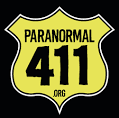
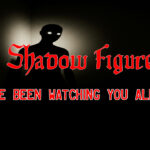 Shadow Figures: They’ve Been Watching You All along
Shadow Figures: They’ve Been Watching You All along  The Bigfoot Mystery of Mt Saint Helens
The Bigfoot Mystery of Mt Saint Helens 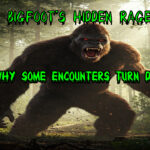 Bigfoot’s Hidden Rage: Why some Encounters turn Deadly
Bigfoot’s Hidden Rage: Why some Encounters turn Deadly 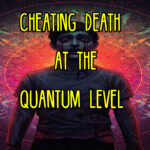 Cheating Death at the Quantum Level
Cheating Death at the Quantum Level  Into the Unknown: Exploring the Michigan Triangle
Into the Unknown: Exploring the Michigan Triangle  The Shag Harbour UFO Incident
The Shag Harbour UFO Incident  Is this the last Pope? The St. Malachy’s prophecy
Is this the last Pope? The St. Malachy’s prophecy 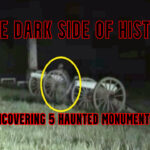 The Dark Side of History Uncovering 5 Haunted Monuments
The Dark Side of History Uncovering 5 Haunted Monuments